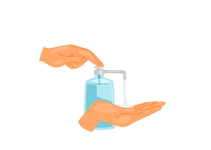Amodiaquine
Introduction
Amodiaquine is an antimalarial medicine primarily used to treat and prevent malaria, especially in regions where resistance to other antimalarial drugs is prevalent. It belongs to the class of 4-aminoquinoline compounds and is often used in combination with other medications to enhance efficacy. Amodiaquine works effectively against the Plasmodium parasite, which causes malaria. It is commonly prescribed by healthcare professionals in areas with high malaria transmission rates. This medicine is crucial for managing acute malarial infections and is recognized by health organizations for its role in global malaria control strategies.
Medicine Not Available for Amodiaquine
Uses of Amodiaquine
- Treatment of uncomplicated malaria caused by Plasmodium falciparum
- Prevention of malaria in high-risk regions
- Used in combination therapies for better efficacy
How Amodiaquine works
Amodiaquine works by interfering with the parasite's ability to digest hemoglobin, a vital process for its survival. It accumulates in the parasite's food vacuole and inhibits the detoxification of heme, leading to toxic build-up that ultimately kills the malaria parasite.
Benefits of Amodiaquine
- Highly effective against chloroquine-resistant malaria strains
- Can be used in combination with other antimalarials for better outcomes
- Recognized by WHO for seasonal malaria chemoprevention (SMC)
- Well-tolerated when used under proper medical supervision
How to take Amodiaquine
Amodiaquine should be taken exactly as prescribed by a healthcare provider. It is usually taken orally with or without food. The dosage depends on the patient’s weight, age, and severity of infection. It is essential to complete the full course of treatment, even if symptoms improve early, to ensure the parasite is completely eliminated.
Type of Dosage Available
- Tablets
- Oral suspension
- Combination tablets with artesunate (ASAQ)
Side effects of Amodiaquine
- Nausea
- Vomiting
- Abdominal pain
- Headache
- Dizziness
- Itching or skin rash
- In rare cases, liver toxicity or blood disorders
Safety advice
- Not recommended for individuals with liver disorders
- Avoid if you have a history of hypersensitivity to 4-aminoquinolines
- Should not be used for long-term prophylaxis
- Inform your doctor about any other medications you are taking
- Pregnant and breastfeeding women should consult a doctor before use
Frequently Asked Questions (FAQs)
Q: What is Amodiaquine used for?
Amodiaquine is used for treating and preventing malaria, especially in areas where resistance to other drugs like chloroquine is common.
Q: Can Amodiaquine be taken daily?
No, Amodiaquine is not recommended for daily use or long-term prevention. It is used for short-course treatment under medical guidance.
Q: Is Amodiaquine safe during pregnancy?
Its safety during pregnancy is not fully established. It should only be used if clearly needed and prescribed by a doctor.
Q: Can I take Amodiaquine on an empty stomach?
Yes, but taking it with food may reduce stomach upset and improve absorption.
Q: What should I do if I miss a dose?
Take the missed dose as soon as you remember. If it’s almost time for the next dose, skip the missed one. Do not double the dose.
Download India's most affordable pharmacy app
- Compare with medicine prices
- Save upto 90% on your medicine bills

Temperature Controlled storage and delivery

Regular Sanitization

Disinfected Packaging









 Added!
Added!